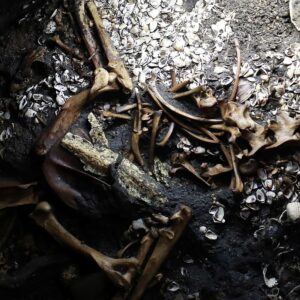By studying the skull of Sahelanthropus tchadensis dating back to 7 million years ago, scientists have shown that bipedal walking is the preferred mode of transportation for this species.

Sahelanthropus tchadensis was able to stand upright and walk on two legs about 7 million years ago. (Source: Pinterest)
The oldest known human ancestor stood upright, walked on two legs and climbed trees about 7 million years ago. This is the latest study on human ancestors published in the journal Nature on August 24.
In 2001, scientists discovered a skull fossil dating to about 7 million years ago of Sahelanthropus tchadensis – an extinct species of the family Homininae (African ape) in the Republic of Chad.
The fossil, named “Toumai,” is a nearly complete skull and there are indications that the species was bipedal based on spinal position and other factors.
This topic has caused fierce debate among scientists. Some argue that Toumai is not a relative of humans but an ancient ape.
At that time, scientists also found leg and arm bones along with thousands of other fossils, but could not confirm that they belonged to the same individual as Toumai’s skull.
After years of examining and measuring the bones, scientists have identified 23 traits and compared them to hominis, which are more closely related to humans than chimpanzees.
After the comparison, study lead author Guillaume Daver said the team came to the conclusion that “these features are closer to those found in hominins than in any other primate.”
The team presented evidence that Sahelanthropus did not prod the back of the hand like gorillas and chimpanzees.
The habitat of this species has a mix of forests, palm groves and savannahs, which means that walking on two legs while climbing trees will be an advantage.

Paleontologist Franck Guy, one of the study’s authors, said: “The skull tells us that Sahelanthropus was part of the human lineage. New limb bone research demonstrates that bipedal walking is the preferred mode of transport for this species, depending on the situation, but also sometimes climbing over trees.”
Meanwhile, paleontologist Jean-Renaud Boisserie said: “Bipedal walking is not a magical feature that exactly defines the human race. It is a trait that we found in all of them. representatives of humanity.”
Appreciating the results of the study, paleontologist Antoine Balzeau of France’s National Museum of Natural History said the study was “extremely important,” giving “a fuller picture of Toumai and also of the world. the first humans.”
The study was authored by researchers from the Palaeontology Institute PALEVOPRIM, France’s CNRS research center, the University of Poitiers and scientists in the Republic of Chad.





